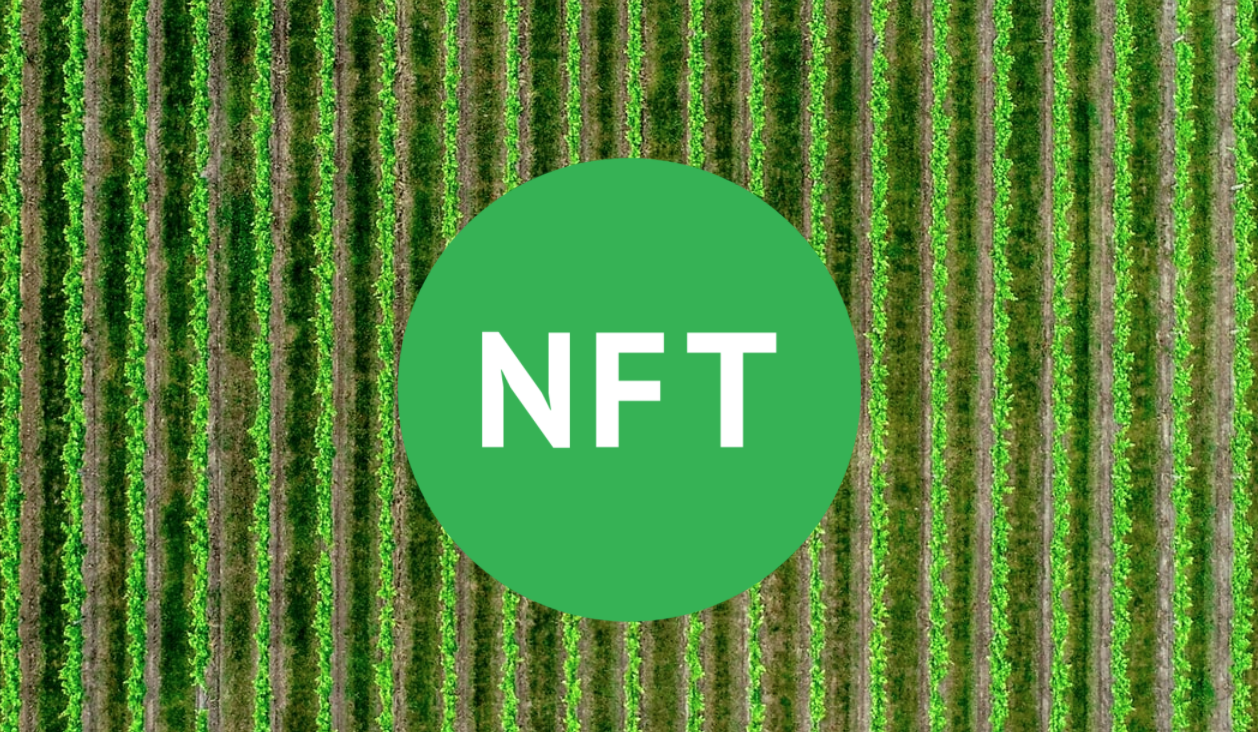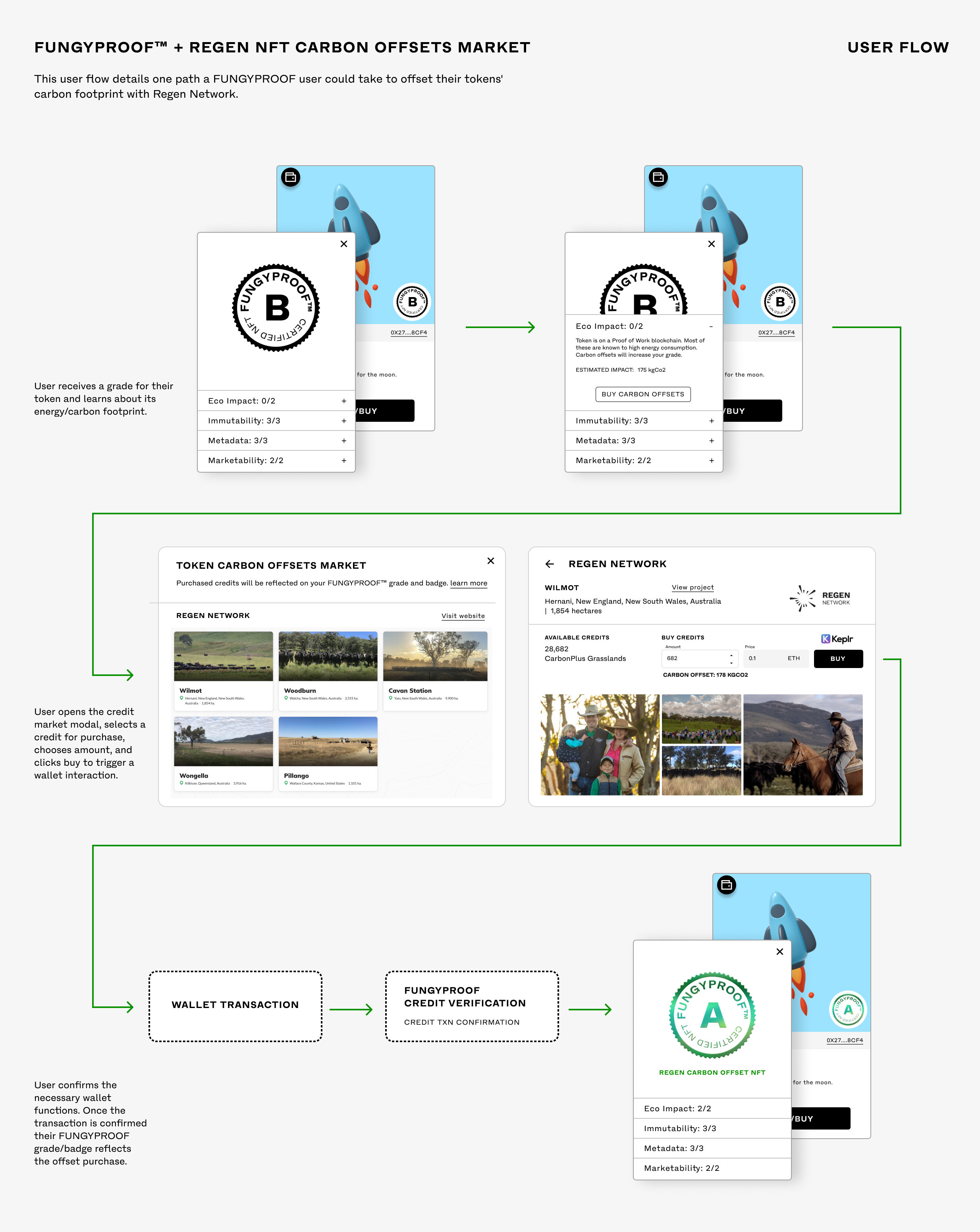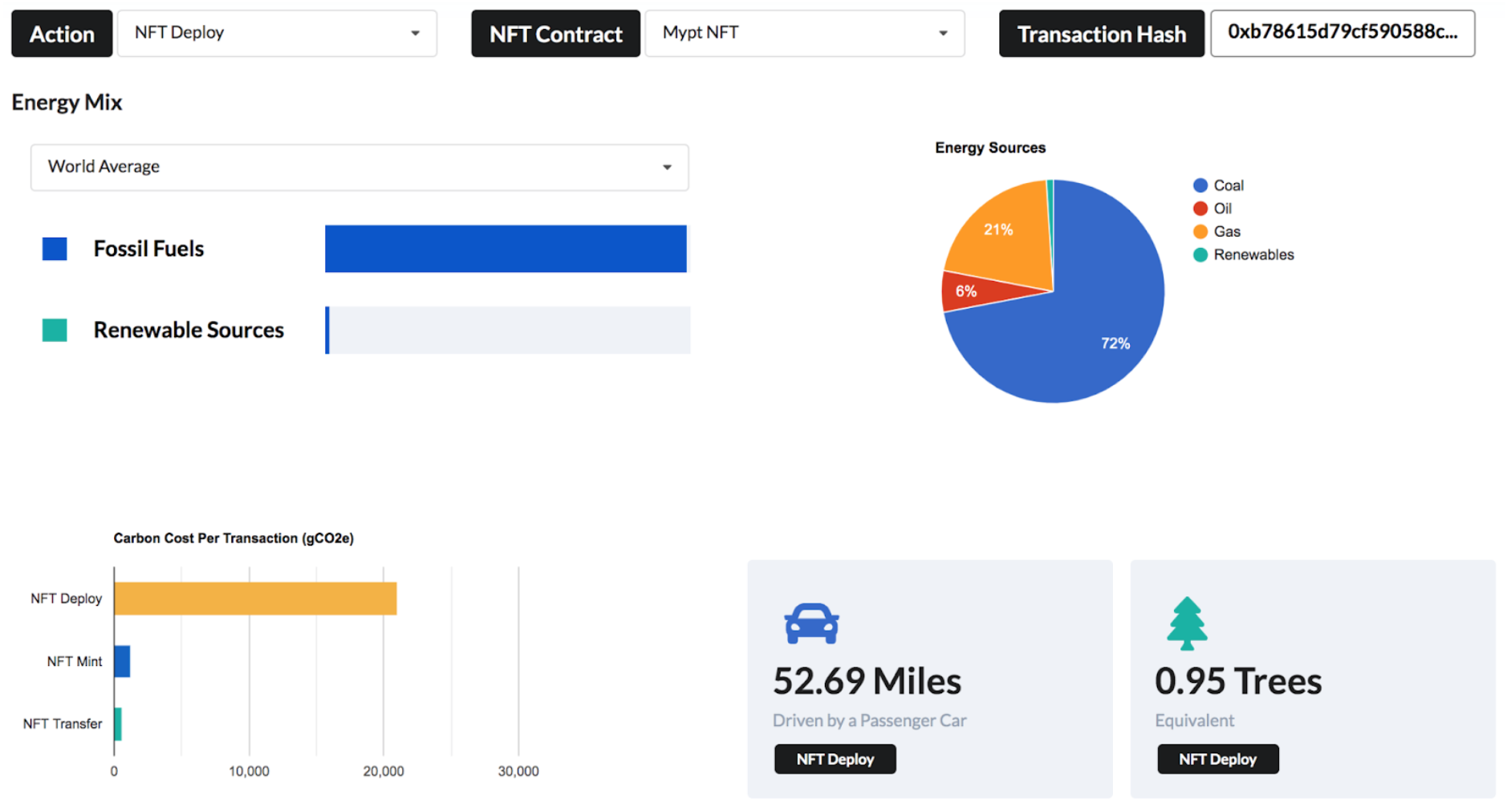Historically, making a living as an artist has been extremely challenging. For many artists and their families, the digital art economy built around NFTs has saved them financially, particularly during COVID with its uncertain economy and poor job market. However, minting NFTs on some blockchains has been found to be very energy inefficient and damaging to the environment. This created an unhealthy division and friction among creatives that reached a fever pitch in early 2021 when the mainstream media related the news more widely.
While it was initially important to draw attention to the issue of the environmental impact of NFTs, I was eager to see the human energy that was being wasted on finger-pointing and shaming artists redirected towards something more productive. On February 8th, 2021, I tweeted the following:
The response from the community was overwhelmingly positive. This motivated me to put together a proposal of how the bounty might work. I broke the grant down into two parts: an awareness bounty and a solutions bounty. A third bounty focused on carbon offsets sponsored by Regen was later added to round out the grant. I’m excited to share that, thanks to the generous donations of thousands of members of the NFT community and the support of Gitcoin (particularly Connor O’Day), we have awarded 60,000 DAI ($60K) to 39 teams who submitted projects to the GreenNFTs Hackathon!
The submissions for the awareness and solution prizes were judged by Matt Hall and John Watkinson of Larvalabs, creators of CryptoPunks, Autoglyphs, and Meebits, and NFT art advisor and respected community member Fanny Lakoubay. The voting was done using quadratic voting, a system intentionally designed to empower the judges to express the degree of their preferences and not just the direction of their preferences (avoiding winner-takes-all situations). The Regen prize, generously sponsored by StakeFish (and managed by Daniel Hwang) was judged by Daniel Pittman, community manager and user advocate from Regen.
I encourage you to check out all 39 winning submissions to the GreenNFTs hackathon. Details are attached in this spreadsheet. Our goal is to build out a site in the near future to give all of the submissions a permanent home where they will be more easily accessible to the community. For this post, I will briefly highlight the three projects that received the highest number of “voice credits” for each bounty.
Top GreenNFTs Hackathon Projects
The GreenNFTs Regen Prize - 1st Place, Team FungyProof
Blockchains predominantly run on one of two consensus mechanisms: Proof of Work (PoW) or Proof of Stake (PoS). With PoW, computers around the world (miners) compete to solve a computational puzzle to mine the next block. This requires a vast amount of computing resources which consume a significant amount of electricity, accounting for the majority of the carbon footprint of NFTs. By contrast, Proof of Stake is a concept where a person mines or validates block transactions according to how many coins they hold. By removing the need for massive amounts of computing, PoS consensus mechanisms dramatically reduce the environmental impact of NFTs. However, the majority of NFTs have been minted on PoW systems, and this is likely to be true until Ethereum (the most popular platform for minting NFTs) moves to PoS.
One strategy to try and offset some of the carbon cost of NFTs minted using PoW is to purchase carbon credits. Regen Network is a Cosmos SDK-based network that offers a platform to verify, mint, buy, and sell tokenized carbon credits in an open marketplace for climate solutions. At its core, the network is built around ensuring stewardship of the planet from a first-principles approach of a fair and decentralized medium to provide provably verifiable carbon credits and facilitate liquidity to this growing market.
Team FungyProof, brothers Mike and Brandon Roth, came in first place for the Regen Prize. FungyProof is a web application and API which uses blockchain and NFT marketplace data to surface an accessible and objective grading system for NFTs. The team created an embeddable badge for token holders and token creation platforms which enables the display of an NFT’s Eco Impact, Immutability, Metadata, and Marketability grade using signed validation of token/contract ownership.
For the Regen bounty, the Roth brothers submitted a paper outlining an elegant solution for purchasing and offsetting carbon emissions of NFTs directly from a cryptocurrency wallet by integrating their FungyProof app for producing embeddable badges with the Regen Network. They outline the user flow for this below.
Given time for further exploration, the team would like to look into making use of the Cosmos gravity bridge so that Ethereum transactions could theoretically be used to purchase Regen credits.
Coincidentally, Mike and Brandon also won prizes for submissions to the awareness and solutions bounties, making team FungyProof the top vote-getting team for the entire GreenNFTs Hackathon!
The GreenNFTs Awareness Prize - 1st Place: Team O.N.C.E.
The goal of the awareness bounty is to provide clearer information on the impact of different approaches to producing NFTs. We believe that arming artists, collectors, and platforms with better information helps them make more informed decisions in regards to the impact of NFTs on the environment.
Measuring the impact of NFTs on the environment has proven to be particularly tricky. Team O.N.C.E. (Operation Nifty Carbon Emissions), led by Brendan Graetz and Gaurang Torvekar, drilled down all the way to the transaction level, showing that different transaction types (deploying, minting, and transferring) have varying gas usage, and thus, varying environmental impact. They also note that energy sources used for mining can vary in their mix of renewable sources and fossil fuels. All these elements should be taken into consideration when estimating the actual impact of NFTs on the environment.
Team O.N.C.E. submitted an extensive light paper, their full code base, and a data visualization app. The clever app allows you to select a transaction type (deploy, mint, or transfer) within a given smart contract as well as an estimated energy mix (percentage of fossil fuels vs. renewables). Once you input your custom settings, the app creates a chart comparing the estimated carbon cost resulting from the transaction types and energy mix. To make it easier for end users to understand the environmental impact, the team compares the transaction's carbon footprint to other known activities such as felling trees or miles driven in a car.
The end goal was to provide non-technical users with an easy-to-use and easy-to-understand way to conceptualize the carbon costs of their interactions with NFTs on blockchain networks.
In their light paper, team O.N.C.E. acknowledges there are limitations to their approach. Specifically, they attribute all energy consumption and carbon costs of a blockchain to the transactions which are successfully executed on it. While they believe this is where the majority of the energy is consumed, they acknowledge some energy is also consumed by other activities that should be accounted for in future work. They would also like to go beyond measuring only on Ethereum to include other blockchains, work on analysis separating read and write transactions, and further analyze and account for proportions between gas and energy consumed per transaction.
The GreenNFTs Solution Prize - 1st Place: Team CALM
As exciting as the blockchain is, we at GreenNFTs are mostly encouraged by the community of bright, young creatives that have formed around it. Yes, there are many efforts in progress to improve efficiency, but most of these are company/platform driven. We believe great ideas can come from anywhere. We created the solutions bounty to encourage the development of more efficient NFTs by driving some out-of-the-box thinking from the community to complement existing approaches.
One way to reduce the total carbon cost of NFTs is to avoid minting them until there is a potential collector interested in buying them.
For many years, the standard paradigm for NFTs involved artists minting a large number of artworks onto various marketplaces with the hopes that collectors would see their work there and buy it. This approach has several setbacks. For starters, on a day when gas fees are high, the cost for an artist to mint a single artwork can be hundreds of dollars. With no guarantee that a given artwork will sell, these fees can add up and become prohibitive for many artists. Additionally, a large portion of the minted artworks contribute to the carbon cost of NFTs, but are never actually sold.
To get around the issues of artists paying high gas fees for NFTs that use up energy but may never sell, the platform OpenSea introduced the concept of “lazy minting” in late 2020. According to OpenSea, lazy minting “...allows creators to make NFTs without any upfront gas cost, as the NFT isn’t transferred on-chain until the first purchase or transfer is made.” In other words, the artist uploads their artwork to the marketplace off-chain and gives the platform permission to mint it if a collector comes along and expresses interest in buying it.
Lazy minting works great. We have even seen well-known artists like Pak calling on other platforms and artists to embrace it. Unfortunately, the lazy minting solution for OpenSea and other platforms like Mintable are closed source. The first-place winner of the GreenNFTs solutions bounty, Nicholas S. and Thomas Gauthier-Caron of team CALM (Content Addressed Lazy Minting), created an open-source standard and reference implementation for lazy minting that any platform or artist can leverage.
Team CALM explain:
In addition to its gas-saving environmental benefits, by dint of being open source, CALM enables NFT creators to deploy their own minting contracts to Ethereum. We believe that enabling NFT creators to deploy their own contracts will increase their participation in network governance. If NFT creators express their concerns, such as their interest in the environmental impact of consensus mechanisms to the core development community, this will positively affect the prioritization of more ecological solutions.
As with Team O.N.C.E., Team CALM acknowledges that each transaction has its own carbon cost. While lazy minting reduces the ecological impact of NFT creation by reducing the total number of NFTs created, subsequent transactions (minting, selling, transferring) remain on the blockchain. To further enable creators to mint NFTs on the Ethereum blockchain without the overhead of the Ethereum mainnet’s PoW system, Team CALM demonstrates the use of lazy minting on the Matic PoS chain. In their words:
Matic PoS chain delivers the ecological and EVM gas-saving advantages of Eth2 today while maintaining compatibility with existing Ethereum wallets, NFT EIP standards, development languages, and tooling (Bankless).
For their next steps, the team would like to further refine their solution with a professional contract audit.
What’s Next For GreenNFTs
We are thrilled at the level of participation in the first GreenNFTs hackathon. Having learned a lot during the process, we plan on running a second hackathon in the fall where we will distribute the remaining funds from the Gitcoin Grant. We acknowledge that there are many large private organizations that are much better funded working on these same environmental issues and that, once Ethereum shifts to PoS, many of the concerns will go away. But we also believe in decentralization and the ability (and need) for the NFT community to take ownership over this and other challenges that will arise in the future. We hope that the GreenNFTs grant and hackathon will inspire similar community-driven efforts moving forward.
Stay tuned for more initiatives and join our Discord to continue the discussion.





